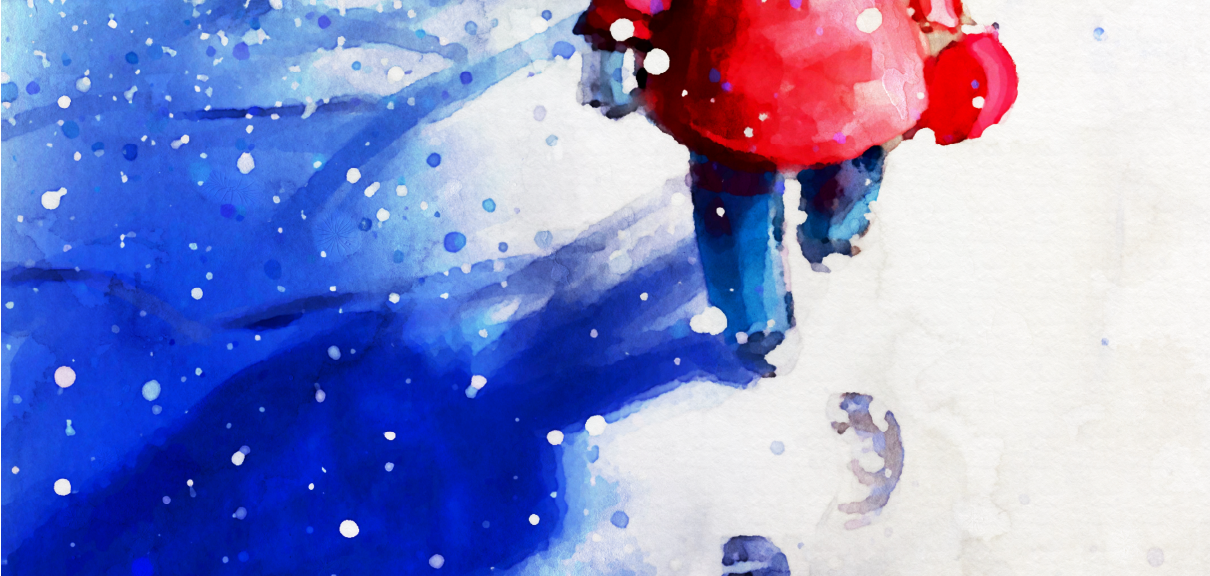Overcoming Seasonal Affective Disorder (SAD) as a Working Professional

Depending on where you are in the world, you might not feel 100% once the clocks fall back at the end of Daylight Saving Time and into the winter. Holiday festivities provide a welcome break to be sure, but those only jazz up the scenery for so long before the earlier evenings, cloudy skies, and frigid temperatures drag on well into the new year.
Most often occurring in climates where there is less sunlight at certain times of the year, Seasonal Affective Disorder (SAD)—characterized by symptoms such as fatigue, depression, hopelessness, and social withdrawal—is a very common diagnosis to describe the winter doldrums many of us experience. In our working lives, SAD could manifest as lethargy, difficulty waking up in the mornings, lower concentration, and apathy or a loss of passion. These symptoms can make it difficult to show up or complete work in a timely fashion, which can and will impact your brand or business.
The most common methods of treatment for Seasonal Affective Disorder include light therapy (phototherapy), talk therapy, and various medications. It’s critically important to consult with your primary care physician if you feel you suffer from SAD, but here are a few coping mechanisms and tips for powering through the season of slumps in the meantime.
TIPS TO ALLIEVIATE SEASONAL AFFECTIVE DISORDER (SAD) SYMPTOMS
FORM ANTI-SAD HABITS
Despite the transition from fall to winter happening annually, it happens seemingly out of nowhere, overnight. One day, it could be a crisp 55-degree autumn afternoon, and the next sleet could be sliding down your window. The transition is difficult to plan for, which is partly why Seasonal Affective Disorder hits so hard every year.
As we discussed in our recent post on boosting your productivity, some environmental elements that can help you shake off lethargy and grogginess are:
- Sunshine
- Fresh air
- Water
- Movement
- Downtime
Whether you’re an independent talent or working as a full-time employee, being able to unwind and unplug can positively influence your mental health. While the weather is mild, try to budget time for enjoying the nice weather however you see fit. If you get in the habit of going out to lunch, going out on walks, taking classes, spending time at a park, playing yard games, organizing game nights, or attending happy hours after work, it’ll be easier to follow through when the weather is underwhelming at best.
SEE THE LIGHT
Seasonal Affective Disorder is tightly linked with a lack of exposure to sunlight. But what can you do if the weather or your schedule make it difficult to get out into the sunshine for a few hours each day?
Many people find phototherapy—using light boxes that simulate sunlight—to be an acceptable alternative. Light boxes are much brighter than “daylight” bulbs, and they distribute the light through different wavelengths than a standard lamp. And unlike therapeutic lamps used for skin disorders, which emit ultraviolet (UV) light and could damage your eyes if used incorrectly, light boxes used to treat SAD should filter out most or all UV light.
Although the practice isn’t regulated by the FDA, research indicates that spending 20-30 minutes in front of a light box within the first hour that you’re awake could help equip your brain chemistry to alleviate symptoms of Seasonal Affective Disorder, according to the Mayo Clinic. For best results, look for products that are 10,000 LUX that you can position in your bedroom, at your desk, or wherever works best for you.
GET SOME ZZZ’S
Sleep is another area of our lives that is greatly affected by the transition of the seasons. Suddenly it gets bright out earlier than you’re used to waking up, and dark an hour before you’re leaving the office. And if you keep atypical hours, you may be dealing with only a few hours of daylight before it’s pitch-black outside. Keeping to a normal schedule, winding down properly, cutting out caffeine before rush-hour, and using Do Not Disturb mode on your devices at night can all help you sleep more soundly and wake up refreshed and ready to go.
For a technological solution that can help you rest easier, try a dawn simulator. Also known as sunrise clocks or lamps, these products simulate the natural cycle of the sun on your schedule. You can adjust your wake up and wind down light fluctuations to fit your sleep/wake times and even customize the sounds that certain models play. In practice, this could mean utilizing a lower light level and relaxing sounds to help you wind down and get to sleep, or it could mean pairing steadily increasing light levels with a certain sound, station, or song to wake you up gently rather than a default alarm that aggressively jolts you awake.
HOW COMPANIES CAN HELP
Mental health has become more of a priority for business leaders in recent years, but there’s still discomfort about the subject in many corners of the corporate world. The first thing leaders can do is destigmatize SAD. Studies suggest that SAD occurs in 1% to 2.4% of the general population, and more than 3 million cases are discovered each year.
Employers can offer Employee Assistance Programs (EAP), and working professionals should feel comfortable taking advantage of those offerings—not just to remedy Seasonal Affective Disorder, but to improve mental health across the board. Most importantly, if a colleague or employee trusts you enough to come to you with their SAD struggles, ensure that you treat them with care, sensitivity, and respect. Slowly, these steps can help us all improve our mental health as working professionals.
GET THE SKILLS YOU NEED
Thousands of independent consultants, subject matter experts, project managers, and interim executives are ready to help address your biggest business opportunities.